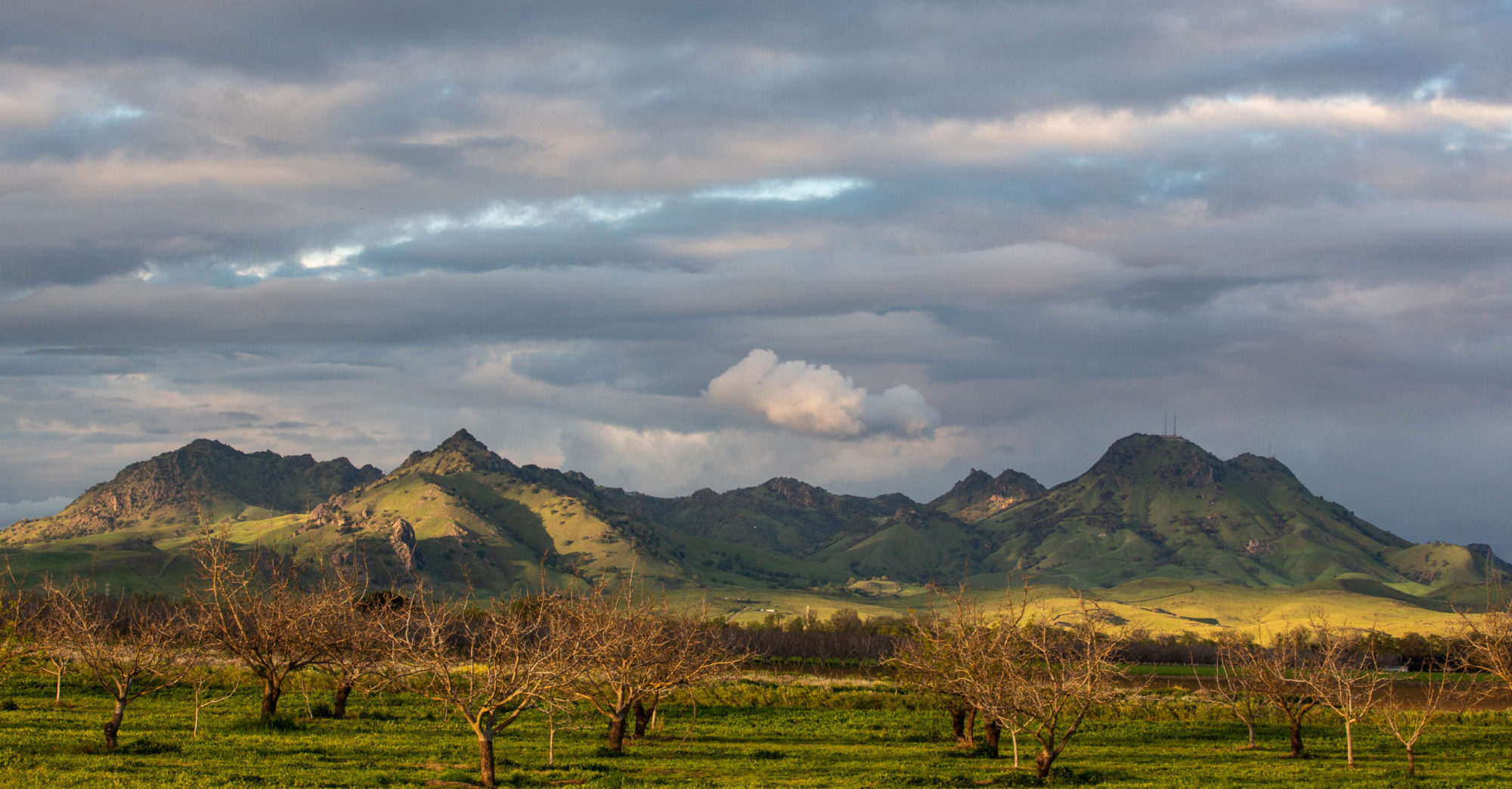From the archives: Last spring, Kate and I drove out to Bethany Reservoir, just south of the Sacramento-San Joaquin Delta at one of the key points in the state’s complex water system. The site is also on the lower eastern slopes of the Altamont Pass country, a big wind-generation site. Pondering the state’s water story and how to tell it–do you take the narrative back to Genesis and/or The Big Bang and talk about where water itself comes from, and how long would it take from that point to get to a discussion of a salmon in the river?– I thought of that visit tonight. Here’s a shot of a wind farm virtually on the bank of the Delta-Mendota Canal–part of the federally developed Central Valley Project–just southeast of Bethany. Whatever you happen to think of the way the water systems were built here and the damage they have caused to salmon and other parts of the old California environment–the engineering is never less than impressive and sometimes beautiful.
The aqueducts move water through a combination of gentle flow and brute force: huge quantities of water are lifted from pumping stations to artificial lakes like Bethany. Then gravity takes over, and the water flows down the manmade rivers to the next set of pumps, maybe 60 or 100 miles away, and the process is repeated. (One of the more surreal sights in the state is along Interstate 5 as the highway climbs the Tehachapi Mountains. The aqueduct runs along the highway, and the water is pumped up nearly 2,000 feet through a pair of above-ground tunnels.) One beauty in the aqueducts is the way they follow the contours along the border of the Coast Range hills to the west and the great valley to the east. The engineers had to work with and respect the lay of the land here.
(Here’s the satellite view, with the hills in their full-on golden summer hue. The image shows Bethany Reservoir. The water comes in from a channel at the northwest corner, having been pumped out of the Sacramento River to a holding basin called Clifton Court Forebay. The California Aqueduct flows out to the south and east (below and to the right). Drag the map to follow the course of the aqueduct. In this image, the California Aqueduct is on the left and the Delta-Mendota Canal is to the right.)

